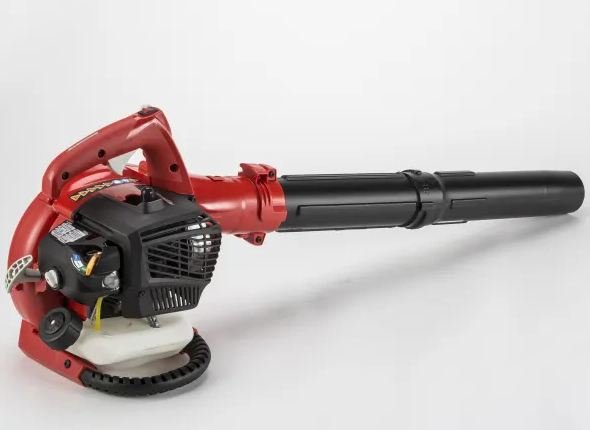Introduction to the Homelite UV80522
Why are there two drain plugs on homelite uv80522, is a powerhouse tool designed for various outdoor tasks. Whether you’re tackling yard work, cleaning up debris, or simply maintaining your garden, this versatile machine has got you covered. But have you ever noticed something peculiar about it? Yes, we’re talking about those two drain plugs! You might be wondering why there are two of them and what purpose they serve. Understanding their function can enhance your experience with the UV80522 and ensure optimal performance. Let’s dive into the details and uncover the secrets behind these essential components!
What are Drain Plugs and Why Do They Matter?
Drain plugs are essential components found in various equipment, including the Homelite UV80522. They serve a critical function: controlling the flow of fluids. Whether it’s oil, water, or fuel, drain plugs help manage these liquids effectively.
By sealing off openings, they prevent leaks and spills that could lead to performance issues or safety hazards. A well-functioning drain plug ensures that no unwanted fluid escapes during operation or storage.
Moreover, drain plugs make maintenance simpler. When it’s time for an oil change or cleaning, you can easily remove the plug to let out old fluids without making a mess. This convenience is vital for keeping your equipment running smoothly and efficiently.
In essence, understanding what drain plugs do can save you both time and frustration when using machines like the Homelite UV80522.
The Purpose of Having Two Drain Plugs on the Homelite UV80522
The Homelite UV80522 features two drain plugs, and their design is quite intentional. Each plug serves a distinct purpose. Having two allows for better drainage efficiency during maintenance.
One drain plug can be used to release excess water that accumulates in the unit. This is especially important after heavy usage or exposure to rain. Quick draining helps prevent potential damage caused by stagnant water.
The second plug provides an additional safety measure. It ensures complete evacuation of fluids, reducing the risk of corrosion over time. By allowing access from different points, it simplifies cleaning routines.
This dual-drain design showcases thoughtful engineering aimed at enhancing performance and longevity. With proper use, both plugs contribute significantly to maintaining optimal conditions for your equipment.
Step-by-Step Guide on How to Use Both Drain Plugs
Using the drain plugs on your Homelite UV80522 is straightforward. Start by ensuring the unit is turned off and cool.
Locate both drain plugs; one typically sits at the bottom of the tank, while the other may be positioned slightly higher to facilitate better drainage.
Begin with the lower plug. Use a wrench to carefully loosen it, allowing any accumulated water or debris to flow out completely. Make sure you have a container ready to catch this runoff.
Next, move on to the upper drain plug. This helps in flushing out residual fluids that might remain after using the first one. Loosen it gently as well and let any remaining liquid escape.
After draining, securely tighten both plugs back into place before operating your machine again. Always check for leaks afterward; this ensures everything runs smoothly for your next task.
Common Mistakes to Avoid When Using Drain Plugs
One of the most common mistakes is neglecting to check for debris around the drain plugs. Dirt and grime can prevent a proper seal, causing leaks during operation.
Another frequent oversight involves over-tightening the plugs. This can damage threads or even crack the housing, leading to costly repairs down the line.
Failing to remove both drain plugs before winter storage is another pitfall. It’s crucial to ensure all water has been drained out to avoid freezing and subsequent damage.
Some users forget to replace gaskets or seals when reassembling after cleaning. Worn or missing seals can lead to unwanted leaks that affect performance.
Not keeping a maintenance schedule often results in overlooked issues with the drain system. Regular checks help catch problems early, ensuring your Homelite UV80522 operates smoothly for years.
Tips for Maintaining and Cleaning Your Homelite UV80522
To keep your Homelite UV80522 in top shape, regular maintenance is key. Start by checking the oil level before each use. Fresh oil ensures smooth operation and protects the engine.
Clean the air filter regularly to prevent debris buildup. A clean filter helps maintain optimal airflow, improving performance and extending engine life.
Don’t forget about the spark plug! Inspect it for wear and replace as needed to ensure reliable starts every time you fire up your unit.
After using your UV80522, flush out any remaining water or debris from both drain plugs. This simple step prevents clogs and keeps everything running smoothly.
Store your equipment in a dry place away from direct sunlight. Proper storage can significantly prolong its lifespan, making sure it’s ready whenever you need it next.
Conclusion
Understanding the design and functionality of your Homelite UV80522 can significantly enhance your user experience. The presence of two drain plugs is not just a quirk; it serves specific purposes that contribute to the overall efficiency and maintenance of the unit.
By familiarizing yourself with both drain plugs, you’ll ensure proper water drainage, which helps in maintaining optimal performance during use. This knowledge also aids in preventing potential damage caused by stagnant water.
Regular maintenance and cleaning are equally important for extending the life of your Homelite UV80522. By avoiding common mistakes associated with drain plug usage, you can keep your equipment running smoothly for years to come.
With these insights on why there are two drain plugs on homelite uv80522, you’re now better equipped to take care of this essential tool effectively. Embrace these practices, and enjoy all the benefits that come from proper upkeep!


